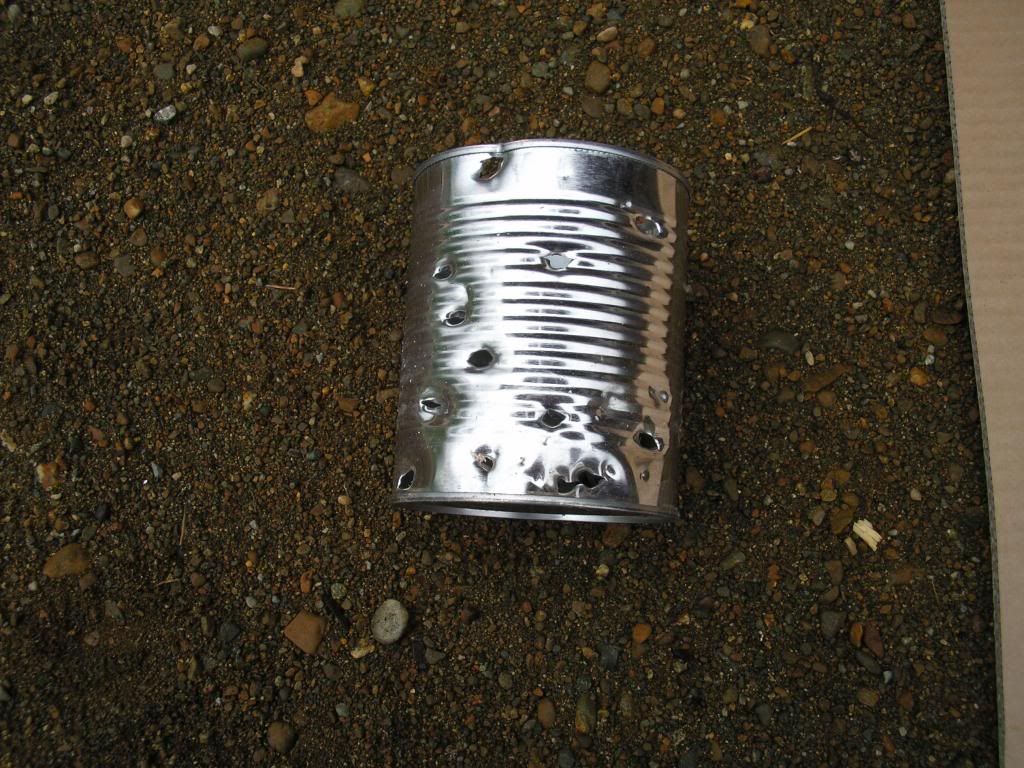I was getting low on #4 and #2 shot, so I figured I would give making some Rupert's Shot a try.
I drilled a hole in the lower edge of a sardine can with the smallest bit I could find. I then warmed the tin on top of my melted range lead so the lead would not freeze right away. Holding the tin with a pair of pliers over a tin can half full of water, I poured lead into the corner where the hole was and topped up as the tin emptied. By keeping a steady pace, I was able to keep the hole from completely freezing up.
Since I was dropping straight into water, I probably had a 75% percent reject rate due to pellets popping open and clumping. I could not turn the lead temp down too much either as my little opening would then freeze over as soon as the lead touched it.
All in all, I am very happy with the results. Here are the pellets that did not go back in the melting pot. They range in size from around #6 through #2.
 [/URL][/img]
[/URL][/img]
I drilled a hole in the lower edge of a sardine can with the smallest bit I could find. I then warmed the tin on top of my melted range lead so the lead would not freeze right away. Holding the tin with a pair of pliers over a tin can half full of water, I poured lead into the corner where the hole was and topped up as the tin emptied. By keeping a steady pace, I was able to keep the hole from completely freezing up.
Since I was dropping straight into water, I probably had a 75% percent reject rate due to pellets popping open and clumping. I could not turn the lead temp down too much either as my little opening would then freeze over as soon as the lead touched it.
All in all, I am very happy with the results. Here are the pellets that did not go back in the melting pot. They range in size from around #6 through #2.












